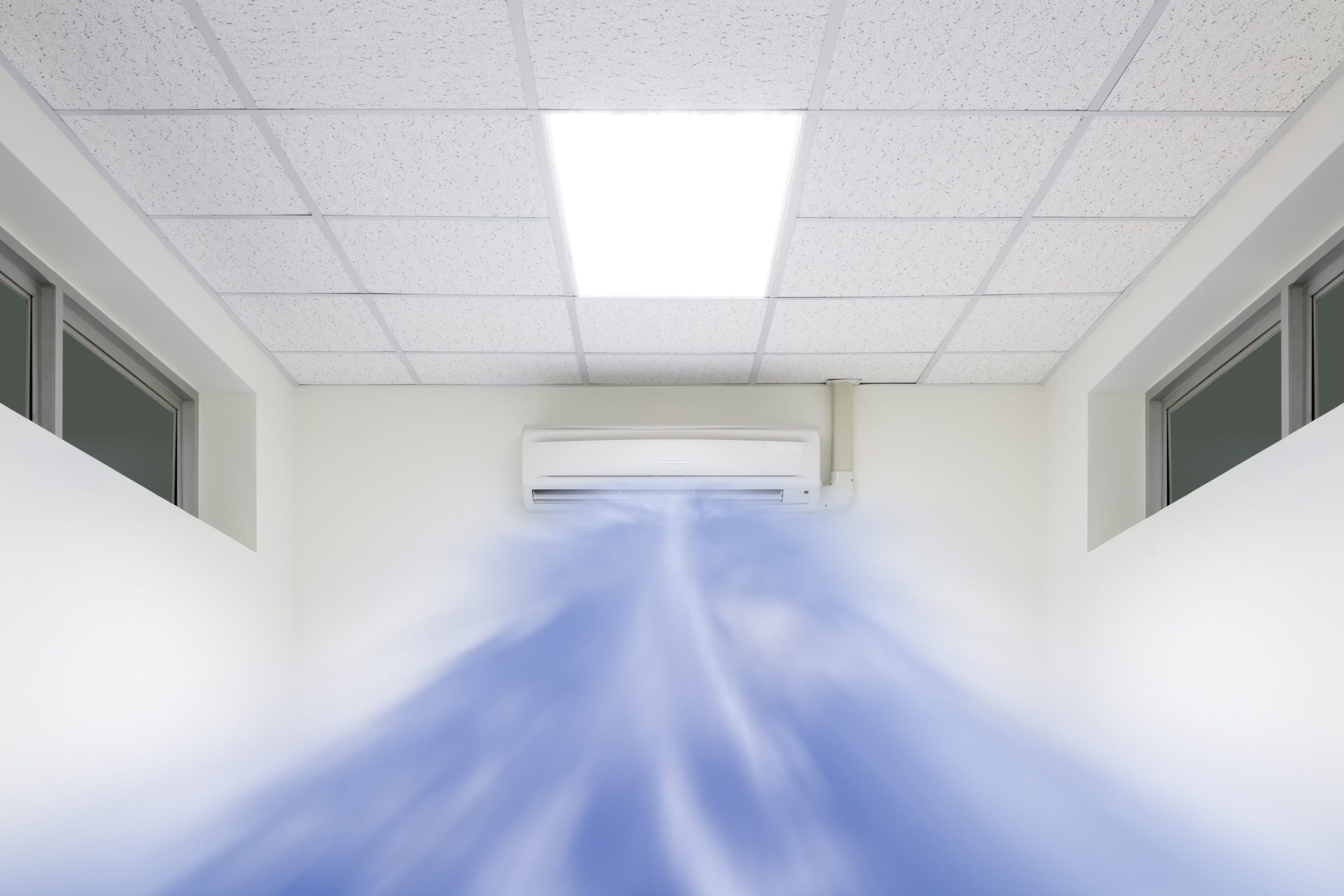
The Differences Between Ducted and Ductless HVAC
There are two main types of HVAC systems: ducted and ductless. Often, people refer to a ducted system as “central” heating and air. With some situations, a ducted system will be more efficient and effective. In other situations, a ductless system could be the better choice.
In order to help you evaluate your options when choosing between a ducted and ductless system, let’s take a look at the differences between them.
See Also: Mosquito Repellant; As If You Needed Another Reason to Love Your HVAC
How Does a Ducted System Work?
A ducted system is generally a single air handling unit that sends heated or cooled air out to the entire building. This is why it’s called “central” air conditioning. A single air handling unit is either packaged with or attached by refrigerant lines to a single outside unit.
The air handling unit has a fan that circulates air through the ducts of the building. It draws air in through the intake vent and sending it back out through the registers into all the rooms of the building. This one unit is responsible for heating and cooling the entire building at the same time.
See Also: Conditioned Air Solutions Custom Ductwork Shop
How Does a Ductless System Work?
In contrast, a ductless system has multiple air handling units. Each air handling unit is generally mounted on a wall in the room that it’s intended to heat or cool. So if your home has five rooms, you’d have five air handling units. One installed in each room.
Each of those air handling units is attached by refrigerant lines to an outside unit. In a basic mini-split ductless system, each air handler is attached to its own outside unit. It does not share with any other air handler.
With a multi-split system, on the other hand, multiple air handlers are attached to a single outside unit. There are generally up to five units. In the example above, if your home has five rooms, you could have five outside units. You could also have a single outside unit attached to all five air handlers.
See Also: Why Do you Need Indoor Air Quality Products?
Zoning for Comfort and Efficiency
One of the major differences between a ducted system and a ductless one has to do with zoning. While it is possible to have a ducted system “zoned” it is at an additional cost. Meanwhile, a ductless system is inherently a zoned system.
That’s because each air handler in a ductless system operates independently. With a ductless system, you can set each of your five rooms to its own individual temperature. This is good if different members of your family have very different opinions about what constitutes a “comfortable” temperature. A ductless system can save you from a lot of arguments.
By contrast, with an unzoned ducted system you generally have a single thermostat set to a single temperature. That thermostat controls the air handler serving the entire house.
Does certain parts of your home tend to be warmer or cooler than the central location of the thermostat? Then you may not get sufficient heating or cooling in those rooms. You also cannot set the temperature of individual rooms to match individual preferences.
The ductless system’s zoning capability also makes the system more efficient. This is because you’re not wasting energy heating or cooling the entire house when only one room needs it.
For instance, on a warm summer night, your upstairs bedrooms may need more cooling. In a ducted system, you’re forced to waste energy cooling the entire house just to get those bedrooms cooled off enough to sleep. With a ductless system you can just cool down those rooms without turning the rest of your house into an icebox.
See Also: Daikin Ductless Comparison Chart
Losing Energy in the Ducts
Ductless systems are also generally more energy efficient than ducted systems. This is because the heated or cooled air coming from a ductless air handler doesn’t have to travel through ductwork before it gets to its destination.
For example, as cooled air travels through the ducts of the average home, it wastes about 20-30% of the energy used to cool it. That’s because the cooled air is absorbing heat through the ductwork, which often passes through hot, unconditioned spaces like the attic.
By contrast, the cooled air from a ductless air handler is blown directly into the room that it’s intended to cool. It doesn’t have to travel through ducts, picking up heat along the way. That gives ductless systems a big advantage in terms of energy efficiency.
See Also: Why You Need a Duct Pressure Test
Advantages of a Ducted System
However, while ductless systems can have big advantages in terms of efficiency and comfort, ducted systems definitely have their upsides too. One of the biggest advantages is cost.
According to the U.S. Department of Energy, installing a new ductless system costs about 30% more than installing a new ducted system of the same size. This is assuming that the building already has ductwork.
A ducted system also offers the advantage of simplified central control. In a home or commercial space where temperatures generally remain uniform and don’t vary much throughout the day, this convenience can outweigh the advantages of zoning.
Ducted systems also tend to be more efficient and effective for commercial buildings that have large open spaces in need of uniform heating and cooling.
Some of the disadvantages of a ducted system can be lessened by upgrading the system with zoning, where possible, and by having ducts properly sealed and insulated.


